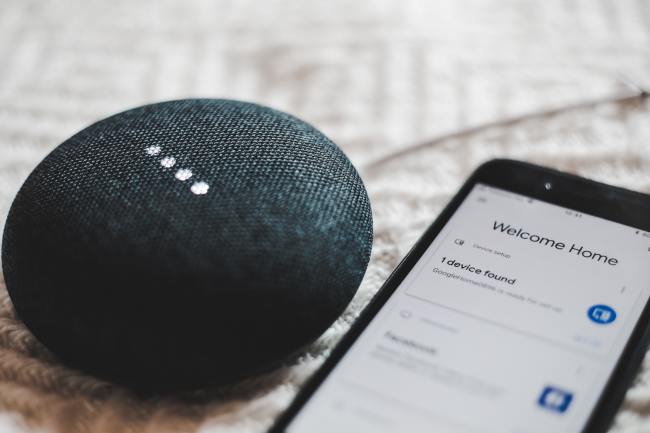
Retail is a conversation. Great retail is a great conversation. The trick to conducting winning conversations and designing effective retail experiences? Mutuality. Human connection. Relationships. These are the catalysts of retail innovation.
At EPAM Continuum, we know that responsible conversation involves listening carefully. It means getting out into the world and having deep, authentic dialogues with the people for whom we’re designing. It means testing each new concept for implementation with these people—not just in the research stage but throughout the design process.
When it comes to retail, companies need to emphasize responsibility, early and often, so that future concepts focus on customers and employees, the people on both sides of the retail equation. This dynamic practice is about pushing your values forward and reminding your team of the central objective.
When it comes to retail, companies need to emphasize responsibility, early and often, so that future concepts focus on customers and employees.
A responsible exchange in retail derives from a balanced interaction that builds a relationship. Positive friction yields brand fidelity, which in time, yields lasting returns. To incorporate responsible practices in retail innovation, here are three guiding principles:
- Responsible retail must be an equal exchange.
- Responsible retail accommodates any time, place, or form.
- Responsible retail feels human in every role.
An Equal Exchange
Retail ecosystems rely on an ongoing conversation between customers and employees. Every experience affects individuals uniquely, and that impression remains in motion until a subsequent interaction replaces it. Companies read responses as macro trends and waves, and this applies blanket assumptions about the unique traits of a single person. Traditional retail followed the money, but today’s retail environment branches out into a complex array of data—all about us. These operations incorporate customer data, analytics, and perceptions of valued information beyond money. Melody Ucros details the techniques on how “companies have resulted to create and use very sneaky techniques to understand customer behavior online and offline.”
Customers are more aware of what they are contributing, and that knowledge makes some self-conscious about their relationships to brands and retailers. We see this as an opportunity for companies, when gathering data, to create an open, ongoing dialogue. When companies have a transparent data policy, customers feel less threatened. Better yet: When customers feel they are heard, and the response reflects thought and effort, the impact feels personal. This positive dynamic presents a matching trade of value between customer and employee.
When customers feel they are heard, and the response reflects thought and effort, the impact feels personal.
There is a difference between a personalized experience for a customer and one that creates an ideal environment for both a customer and the employee taking care of that person. A personalized experience merely communicates that a company knows our likes and dislikes. A responsible tool accounts for the dynamic environments and interactions that a customer prefers. To do this effectively, customers need to see evidence of how their interaction has resulted in meaningful progress. This applies to new customers and life-long clients.
Time, Place, and Form
Customers today take advantage of opportunities to explore retail on their own time and in their own way. This transition into the omnichannel experience ties together disparate touchpoints of digital searches, app interactions, and physical encounters. For a frontline employee, this quick interaction may pass by resulting in a sale or not. There are dozens, if not hundreds of these moments per day. The ephemeral nature of this beehive activity leads to a gradual loss in personal touch. For those that have worked a register or torn ticket stubs, countless faces pass, and these tiny touchpoints blend into a general din of our past. Every time a customer loads an app, searches on Amazon, or travels to the mall, each of those actions influences their impression of a single product or company and its competitor comparison. A responsible frontline workforce is trained to understand when to utilize appropriate personal data and how it impacts their subsequent interactions with the customer.
Forward-looking retailers understand this dynamic, and they value the information shared between touchpoints. Consider Neil Blumenthal’s tactics at Warby Parker, which neatly demonstrate the integration of customer data with a focus on person-to-person interaction. Employees are encouraged, but really trained, to spend as little time looking at their iPad as possible. Moreover, the information on those screens reflects the customer’s history online. Transitions from digital to physical feel like an extension of life rather than separate searches that reset each time. "No one wants to be followed around the store," Blumenthal says. "You never want the customer to feel like they're better off shopping online." I would take this one step further. You never want the customer to feel like they’re better off shopping outside of where they are, digital or physical. Since these preferences are dynamic and ever-changing, a responsible practice raises the holistic standard incrementally rather than an isolated spike.
A responsible frontline workforce is trained to understand when to utilize appropriate personal data and how it impacts their subsequent interactions with the customer.
For a company to react with contextual information, they need to record customer data and respond intelligently. This creates benefits and pitfalls throughout the relationship, and any breach of trust leaves a mark. As researchers find new tools for data patterns through spatial and gaze tracking and web analytics, customers should feel motivated to share themselves.
Human Touchpoints, Always
In order to establish a true connection with a person, retail systems should reflect the personalities of the people who created them. It’s not about creating a robot to regurgitate numbers and product names to customers. We’re here to help humans find what they want or need. A device cannot bring the same emotional impact as a person, but it can be a vehicle to convey the human facets of our daily operations.
“We drove by retail stores and antique shops offering a sense of familiarity but no sense of belonging.” My girlfriend, unaware that I was writing on this topic, leaned over on a recent flight and showed this highlighted passage from Kerry Lonsdale’s All the Breaking Waves. This line may not provide many specifics of an interaction, but it speaks to a profound feeling that prevents people from feeling motivated to interact. Without a personal connection, recommendations become guesses. The dialogue on handling data and personalization should pivot to just that—a dialogue. Personal information should not be treated as additional cost to that experience.
EPAM Continuum’s Jessica Maniatis recently highlighted the benefits of meaningfully co-creating retail experiences. Jess illustrates how “our reliance on technology shouldn’t allow us to forget how to connect and engage with consumers. Human interaction is the best way to not only gather qualitative data, but to truly understand and learn from each other.”
In order to establish a true connection with a person, retail systems should reflect the personalities of the people who created them.
In the end, each retailer has a massive bank of data. It is impossible to think in 2019 that a company would let this resource sit untouched. There are insights, trends, and revenue inside those numbers and graphs. From each interaction in the omnichannel process, or any process, the customer has a mental record of what they have shared and which information they deem sensitive. User agreements have been the contractual standard up until now, but this maintains the implication that customers must conform to the company practices in order to join the experience. Imagine walking into a Dick’s Sporting Goods and signing a contract before tapping a putter on the practice green or trying on pants. By crafting a customer experience as an ongoing conversation, the mutual exchange of value and trust leads to an ideal brand image.
Because this interaction varies on an individual basis, I would like to pose a reflective question. Do retail companies have either the ability or the right to decide which personal data points are appropriate to extract by default?
As we encounter immersive experiences that reach our personal lives, customers should be conscious of how they share their image or information with retailers. But more importantly, companies should strive to treat humans as individuals. While we continually learn to open ourselves to people and devices, a responsible practice will expose itself as a system that helps people rather than solely the system itself.





